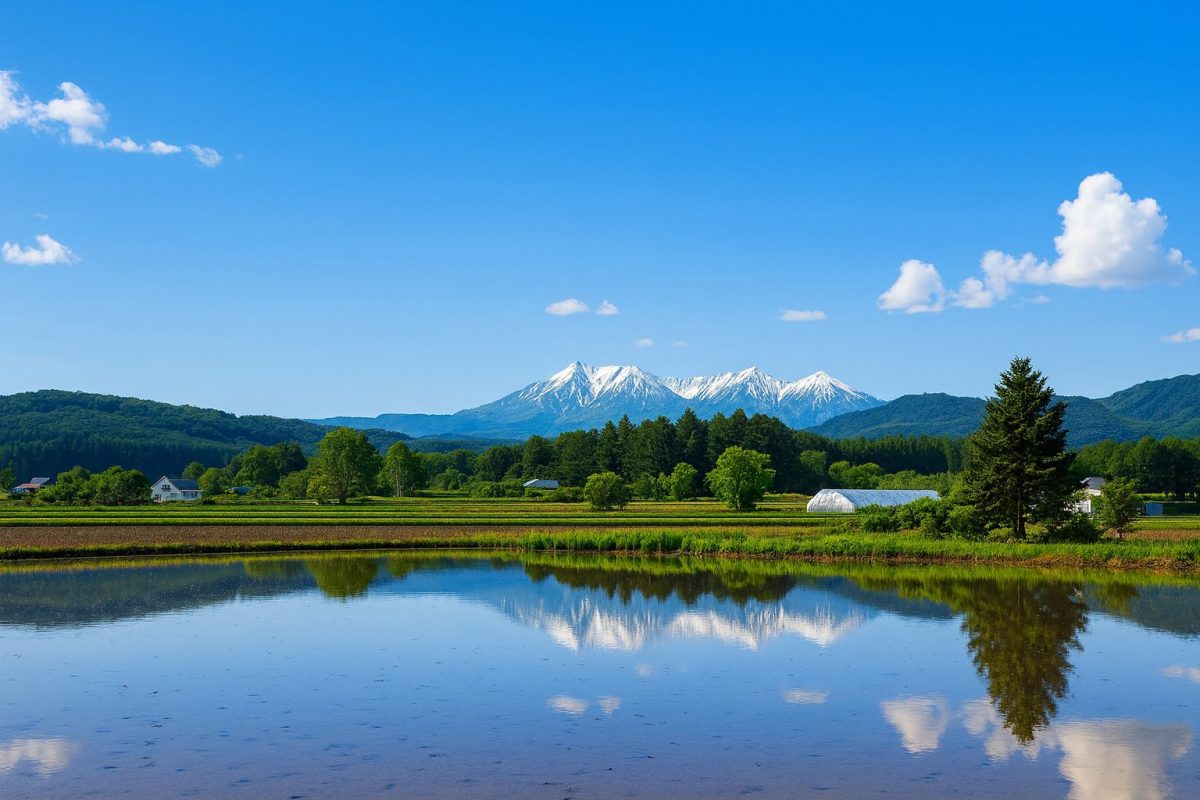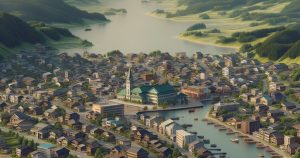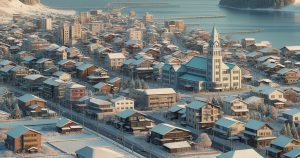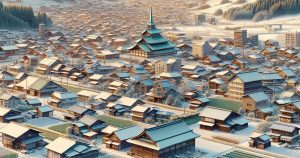| population | 5,975 peoples |
|---|---|
| area | 204.09 km² |
| population density | 29.2 peoples/km² |
Located in Kamikawa District, central Hokkaido, Tōma Town lies on the eastern edge of the Kamikawa Basin, at the foot of the Daisetsuzan mountain range. The town’s name originates from the Ainu word “To-oma,” meaning “a place with many wetlands.” Settlement began in 1893 with the arrival of 400 Tondenhei (military settlers). Today, Tōma thrives on agriculture and forestry, renowned nationwide as one of Hokkaido’s top rice-producing areas. Its premium brand watermelon, the “Densuke Watermelon”—a jet-black fruit once auctioned for 750,000 yen—is a symbol of local pride. The town also produces beautiful summer roses known as “Daisetsu no Bara” and chrysanthemums, the town’s official flower. About 65% of Tōma’s area is covered by forests, and local initiatives promote the use of locally sourced wood in public facilities and homes. Blessed with rich natural surroundings, Tōma offers a harmonious blend of nature, tradition, and modern rural life, attracting both tourists and new residents.
Culture & Traditions
Since the arrival of Tondenhei settlers, Tōma has developed alongside Hokkaido’s pioneering history. Rice cultivation began in the Meiji era and remains central to the town’s identity. Life here is rooted in coexistence with nature, with residents valuing the seasonal rhythms of the year. The local dialect of Hokkaido Japanese can still be heard, reflecting the warmth and unity of the community.
Seasonal festivals are a major part of Tōma’s culture. In summer, the Tōma Summer Festival fills the town center with dancing, food stalls, and fireworks. In winter, the Tōma Snow Light Festival illuminates the snowy streets with hundreds of handmade snow lanterns, creating a magical atmosphere. Other notable events include the Tōma Stalactite Cave Festival and the Harvest Fair, celebrating the bounty of local agriculture. Together, these traditions form the living heart of a community that harmonizes human creativity with the northern climate.
Local Specialties
- Densuke Watermelon: A premium, jet-black watermelon cultivated only in Tōma. Known for its crisp texture and rich sweetness, it’s one of Japan’s most famous luxury fruits, once auctioned for 750,000 yen.
- Daisetsu Roses: Called “Japan’s No.1 Summer Roses,” these vividly colored blooms thrive in Hokkaido’s cool air and are prized nationwide for their fragrance and elegance.
- Chrysanthemums: As Tōma’s official flower, chrysanthemums are cultivated extensively. The autumn landscape comes alive with colorful blossoms, celebrated at local flower exhibitions.
- Tōma Rice: Award-winning rice consistently ranked “Special A” for its taste and quality. It’s prized for its natural sweetness and smooth texture.
- Woodcrafts: Locally produced wooden furniture and crafts made from town-managed forests. Sold at the Michi-no-Eki Tōma roadside station, these items highlight Tōma’s forest culture and craftsmanship.
Annual Events
- Tōma Snow Light Festival (February): A winter illumination event featuring snow and ice lanterns that light up the town in a dreamy glow—popular among families and visitors.
- Tōma Cherry Blossom Festival (Early May): Held at Tōma-yama Nature Park, where cherry blossoms bloom in full glory alongside food stalls and local entertainment.
- Tōma Summer Festival (Late July): A lively summer event featuring Bon Odori dances, food stalls, and a grand fireworks show that draws visitors from all over the region.
- Harvest Fair (October): A joyful celebration of the harvest season, offering fresh vegetables, local delicacies, and family-friendly activities.
- Winter Illumination (December): The area around Michi-no-Eki Tōma is decorated with beautiful lights, creating a romantic winter scene.
Access
- By Air: Nearest airport: Asahikawa Airport (Higashikagura Town), approximately 40 minutes by car.
- By Train: Tōma Station on the JR Sekihoku Main Line, about 25 minutes from Asahikawa Station.
- By Bus: Dohoku Bus operates regular service between Asahikawa and Tōma; about 40 minutes travel time.
- By Car: About 30 minutes (25 km) from central Asahikawa via Route 39. Easy access from Asahikawa-Kita IC on the Dōō Expressway.
- By Bicycle: Around 25 km from Asahikawa Station along the scenic Ishikari River route—a pleasant ride during spring through autumn.
Tourist Attractions
- Tōma Stalactite Cave – A designated Natural Monument of Hokkaido. Visitors can explore the mysterious limestone formations inside the cave.
- Tōma-yama Nature Park – A scenic park offering panoramic views of the Kamikawa Basin, cherry blossoms in spring, and colorful foliage in autumn.
- Tōma History and Folklore Museum – Exhibits on local history, pioneer life, and cultural heritage.
- Tōma Dam – A tranquil spot with a lake reflecting the Daisetsuzan mountains. Ideal for walks, photography, and picnics.
- Michi-no-Eki Tōma – The town’s roadside station, offering local produce, Densuke watermelons, and handmade wooden crafts.








